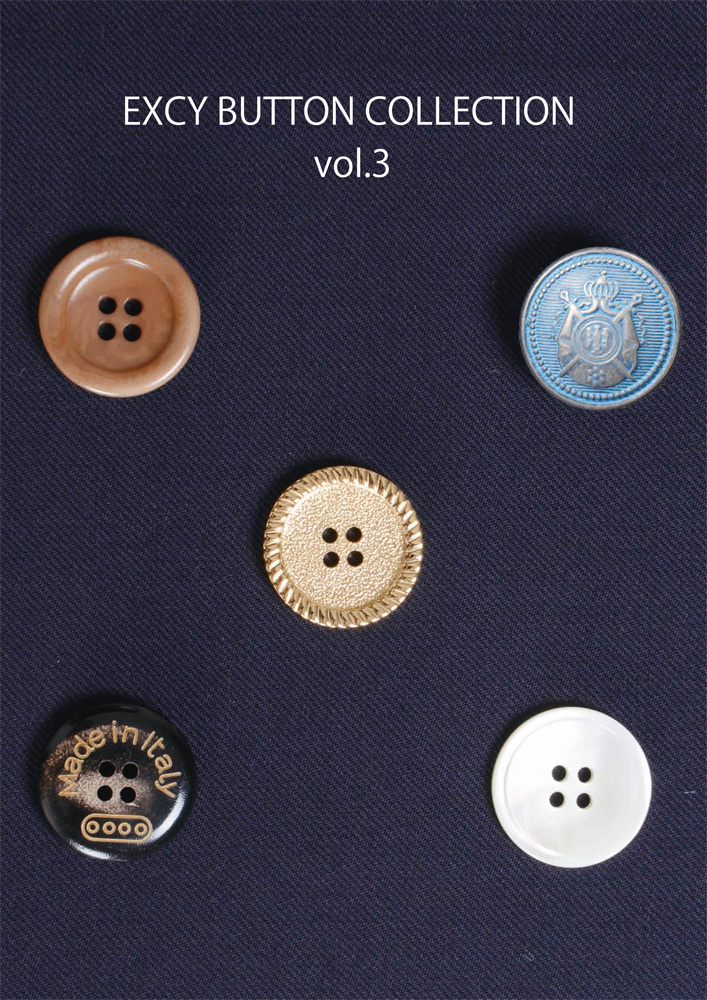Buttons, found on various items including clothing, vary in appearance based on their shape and material. Button materials can be broadly categorized into three types. Let’s introduce the characteristics of each material.
I’m Yu Yamamoto from the TAILORS WORLD editorial team.
{toc}
Natural Materials
Shell
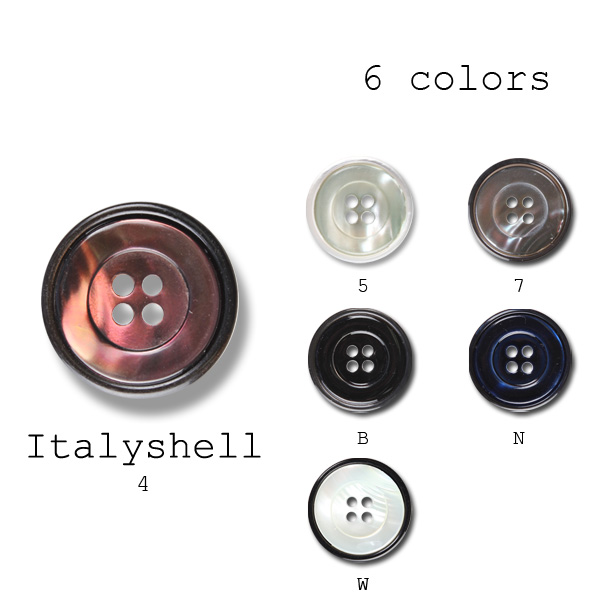
Buttons made from shells. They are crafted by hollowing out shells, classifying them by thickness, and then polishing them before drilling buttonholes. There are four major types:
- Tahiti Shell: More affordable among shell buttons compared to plastic buttons, and it is the most commonly used.
- White Butterfly Shell: This is a high-end shell button, two to three times more expensive than Akasegai. It is popular for its pearl-like luster, and it’s considered rare due to its limited availability as it’s sourced from bivalves.
- Black Butterfly Shell: Features a greenish-gray color. The darker ones are considered higher quality.
- Brown Butterfly Shell: Brown butterfly shell buttons are made from bivalves and belong to the brown category.
Shell buttons are unique as they are natural materials. Each one is different, offering a beautiful, distinct shine compared to plastic buttons. However, they are more susceptible to breakage from impact, making them less durable.
Since shells are primarily composed of calcium, they are not typically dyed. However, coating processes can allow for dyeing.
Nut
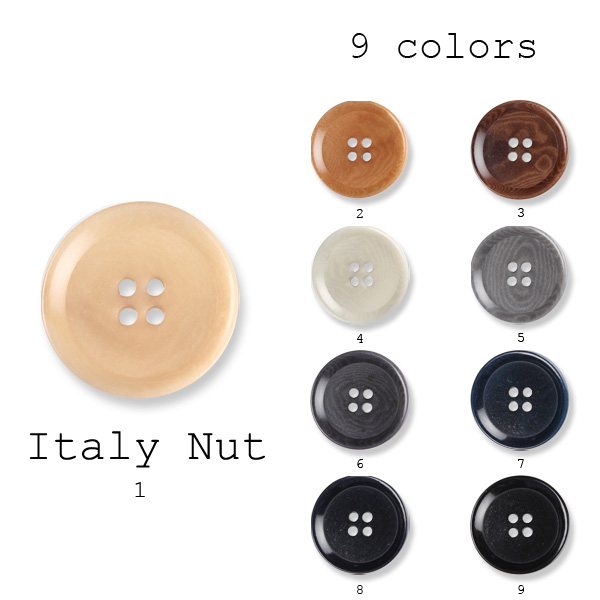
Buttons made from the fruit of the coconut palm, known as tagua nuts. They feature beautiful wood grain patterns. They are used in casual clothing like cardigans and also in various accessories. The inner ivory-like creamy part of the tagua nut is used, hence it’s sometimes called “Ivory Nut.” While it can be used in its natural ivory color, dyeing it brings out a ring-like pattern characteristic of tagua nuts.
Since coconut materials are used, they can absorb moisture when wet, which may lead to staining clothes, mold, or even cracking. The color changes over time, developing a unique character as it is used.
Horn
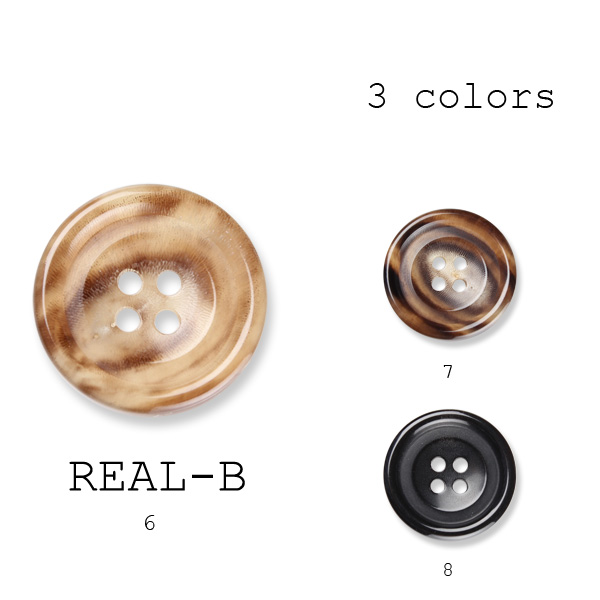
Crafted from processed buffalo horns or bones. Among buttons, they are the most expensive and are used in suits and other high-quality garments. They can be made by either cutting the horns into rings and hollowing them out or by cutting open the hollow horn and forming it into a button.
The color varies depending on the type of buffalo horn. Light-colored horns are rarer and more valuable than black ones. Buffalo horn buttons are known for their durability, resistance to discoloration, and the ability to maintain their texture. However, they may lose their luster with washing, sewing, or steam pressing.
Wood
Various types of wood are used as materials for buttons, including boxwood, birch, ebony, and olive. Most of these woods are hardwoods, and buttons are typically crafted from a single sheet by cutting or hand carving.
Currently, the commonly used wood buttons are made from laminated plywood. Thin sheets of materials like birch, beech, or luan (about 1mm thick) are processed, impregnated with phenolic resin, dried, and pressed together to achieve the required thickness.
Plywood buttons are known for their durability and are relatively affordable among wooden materials. They can also feature designs with a burnt finish that highlights the wood grain.
It’s important to note that plywood buttons contain formaldehyde, so they should not be used for clothing intended for children under 2 years old.
Leather
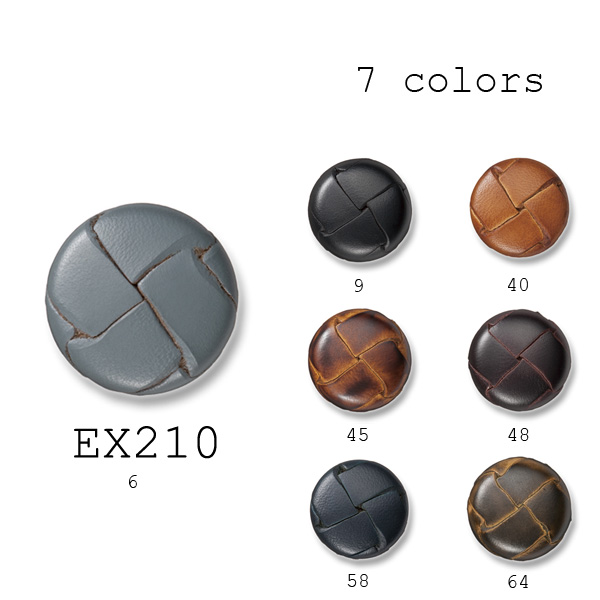
Buttons made from leather are crafted by pressing the hides of animals such as cows, horses, and goats. Leather can be categorized into two main types: chrome-tanned and vegetable-tanned. However, the material primarily used for buttons is typically vegetable-tanned leather.
One notable style of leather buttons is the “basket button,” which is created by weaving strips of leather in a basket-like pattern. These buttons, often found on coats and other outerwear, have a warm and natural texture, adding a unique touch to clothing.
Leather buttons are prized for their genuine and textured appearance. They provide a touch of warmth and character to garments.
Resin
Polyester
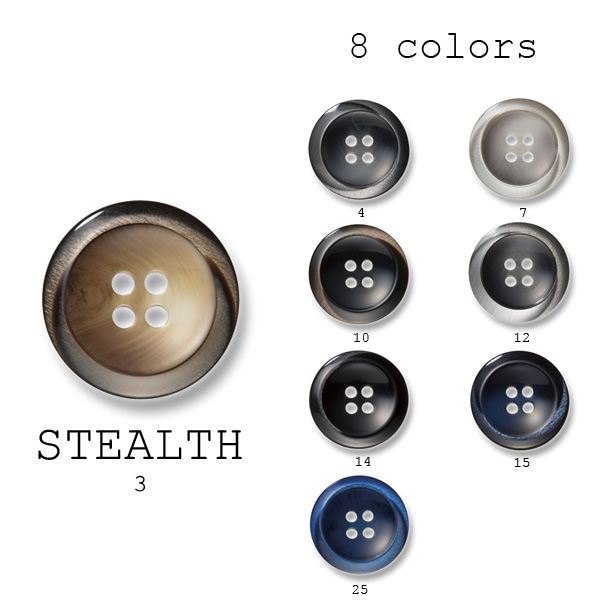
Buttons made from unsaturated polyester resin, derived from petroleum. Production techniques that can replicate the glossy appearance of shell buttons have made them popular alternatives. They are rigid, durable, and easy to shape into various forms, making them versatile for button design. Resin buttons can be used as substitutes for materials like buffalo horn, shells, or nuts due to their ability to be mass-produced, maintain consistent quality, and accept dyeing, making them one of the most commonly used button materials.
Nylon
Buttons made from polyamide resin derived from petroleum. The common method of production is injection molding, where the resin material is poured into molds to shape the buttons. They have high resistance to chemicals and solvents, making them durable. However, they are not very heat-resistant, so care is needed when ironing. They are suitable for mass production, lightweight, and have excellent dyeability.
Casein
While classified as plastic, casein resin is made from milk proteins. Rennet casein, a type of milk protein, is mixed with white pigments, pearl foil, water, and other components to create the resin. This mixture is aged, then heat and pressure are applied to form it into a stick shape, which is later processed into buttons. Casein resin cannot be colored after the fact, so the buttons are dyed during the raw material stage. It offers a warm, milk-white hue with a unique luster, distinct from other plastic buttons. It has excellent strength and dyeability, making it suitable for creating custom buttons. Additionally, casein resin is considered “biodegradable plastic” as it naturally breaks down over time, making it an environmentally friendly material.
Urea
A synthetic resin produced through the reaction of urea and formaldehyde. Developed to replicate the texture of natural materials like buffalo horn or nuts, urea buttons are created by layering materials to form the desired design, compressing and heating the mixture into a tablet, and then using molds to shape the buttons. Since urea resin cannot be colored after molding, it is dyed during the raw material stage. It is suitable for mass production and is known for its durability, resistance to weather, impact, chemicals, and heat. However, it contains formaldehyde, so it should not be used for clothing for children under 2 years old.
ABS Resin
ABS (Acrylonitrile Butadiene Styrene) resin is a co-polymer resin consisting of three components: acrylonitrile, butadiene, and styrene. It combines the characteristics of these three resins, including heat resistance, rigidity, oil resistance, weather resistance, elasticity, gloss, and electrical properties. ABS resin buttons can be plated like metal buttons, a feature not found in nylon or polyester buttons. They look like metal buttons but are lightweight and suitable for thin fabrics like knits.
Metal

Buttons made from materials like zinc and brass. They are commonly used for uniforms, blazers, and other clothing items. While metal buttons may seem heavy, most brass buttons are of the snap type, which consists of two parts: a front part and a back part. These buttons are lightweight because they have a hollow interior.
There are casting techniques, such as die casting and rubber casting, that use zinc, allowing for intricate relief designs. Die casting involves pouring melted metal into molds to shape it, while rubber casting uses rubber molds for shaping.
Die casting has the advantage of being cost-effective but involves higher mold costs, while rubber casting has lower durability than metal molds.
In Conclusion
We have explained various types of button materials, outlining their advantages and disadvantages. We hope you can leverage their characteristics in your clothing creations.
For orders, inquiries related to the content above, or questions about accessories and sewing services, please don’t hesitate to contact
After 2 years of training at a major order-made suit store in Japan, I started my career in apparel materials and fabrics.
I’m especially good at suits and coats.


